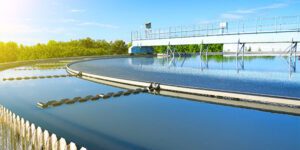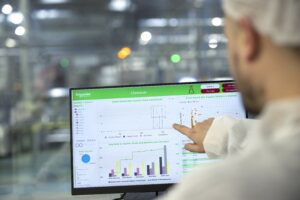Fifty years: that’s roughly the average age of the infrastructure at many water or wastewater (WWW) treatment facilities built or upgraded after the Clean Water Act of 1972. And although this equipment may function well enough that the water meets all necessary standards, is it ready for future demands?
If they haven’t already, aging infrastructure, climate change, and sustainability mandates will most likely impact your operations in the years to come. To maintain a clean, consistent water supply for your customer base — while facing these new challenges — you’ll have to look beyond your potentially dated infrastructure toward digital solutions.
In this blog post, I make a case for digitizing your WWW facility and explain how billions in potential stimulus money can help you do so.

A change in priorities
For the WWW industry, public health has always been the priority. But recently, the WWW industry has had to contend with challenges that impact public health and day-to-day operations. These include:
- Aging infrastructure: Much of the U.S.’ water infrastructure is nearing the end of its life, leading to possible service and contamination issues.
- Climate change and unprecedented weather: Historic droughts in the Southwest, 1,000-year floods in the Midwest, and other severe weather events have affected water availability, causing many communities to rethink how they source and consume their water.
- Sustainability: Public demand for water treatment processes that use energy more efficiently, and control for issues like water loss, has grown in recent years.
Although these challenges are common across the board, not just in WWW, the industry has been slow to modernize, and there are many reasons why. New equipment, including pipes, treatment facilities, and so on, are difficult and expensive to replace. In some cases, the infrastructure is out of sight, and thus, out of mind (resulting in scarce funding). And the workforce — one-third of whom are nearing retirement age — is often more comfortable working on traditional equipment.
Embracing modern technology, and, in particular, digitalization, can help WWW facilities meet these new priorities and overcome hurdles that have slowed progress in the past.
Digital innovations for WWW
Digitalization isn’t just about extracting data from your machines and processes. It’s about getting that data and using it to transform your operations so you can be more efficient, sustainable, and reliable. It gives you insights into how your entire system is functioning. It makes the invisible immediately visible, so you’re not left in the dark when it comes to leaks, worn-out equipment, or device-level energy use. Digitalization shifts operations, maintenance, and emergency responses from reactive to predictive, allowing you to use your assets more effectively and avoid unscheduled downtime.

The process to digitalize starts with either connecting or upgrading your existing infrastructure —treatment plants, water distribution networks, collection systems, electrical equipment — with IoT-enabled products. This allows you to capture data you’re already generating.
But these connected devices are only one piece of the puzzle. To get the visibility and actionable insights you need, your devices must couple with on-site or remote monitoring and automation platforms.
It all sounds abstract, but here’s a real-life example to put it in context. Say you want to improve your effluent quality. Using digital sensors and specialized software, you can gain real-time information on water sample quality, along with device-specific diagnostics. If a pump or filter malfunctions, you’ll receive an immediate alert and be able to remedy before it becomes a bigger issue.
It’s also worth noting that digitalization doesn’t start and end with your current equipment and systems. Digital transformation opens up opportunities to connect with other advanced technologies, such as microgrids. These self-contained electrical networks allow you to generate your own electricity on-site and use it when you need it. At risk of paying demand energy charges? Is a big storm on the horizon? Do you want to increase your use of renewable electricity? Microgrids switch your power to the most efficient, sustainable, reliable method.
An influx of unprecedented funding
But up until now, the main question on the minds of the WWW community has been: How do we fund these digital technologies?
Here’s the good news: At the same time as digitalization is becoming more available (and necessary) for the WWW industry, so is funding to purchase it.
The proposed infrastructure plan currently working through the U.S. Congress includes $54 billion for infrastructure investments to improve energy efficiency, stormwater processing, and other public-owned treatment works services over the next five to 10 years.

Funding in these amounts is unprecedented for WWW. If this plan does pass, it will create great opportunities to modernize and digitalize water and wastewater systems across the U.S.
A new era for WWW
Regardless of the age or location of your WWW equipment, digitalization provides the opportunity to overcome and thrive.
Yes, “new” can be scary, especially in an industry like ours that has been slow to progress. But digital technologies are a game-changer for the WWW industry. It’s an exciting time to be involved.
Want to keep the conversation going? Listen to our recent webinar featuring WWW and legislative experts, to learn more about the stimulus funding and the opportunities that await the WWW community.




